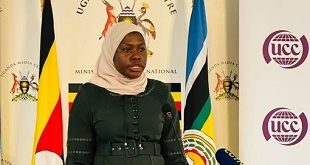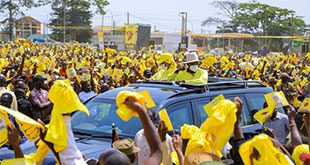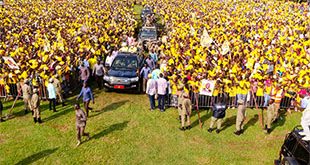
Kampala, Uganda | THE INDEPENDENT | 165 polling stations mainly in Kampala and Wakiso have more than 1200 registered voters, the ceiling of voters supposed to be at a particular polling station according to Electoral Commission (EC) data analyzed by Uganda Radio Network.
The implication of this is the likelihood of several or many voters missing out on voting for their preferred candidates in the event that they all turn up on the polling day.
According to Election Commission standards and guidelines, a polling station in a rural area is not supposed to have more than 900 voters and those in the urban centres are capped at 1,200 voters.
The number of voters per polling station is determined by the available voting time to ensure that if every registered voter shows up, they have a chance to cast their votes. This year voting will take place between 8:00 am and 4: 00 pm. This means there are only eight hours for the vote casting process.
A simple analysis by URN shows that even if every voter is given a maximum of only 30 seconds to cast his or her vote, which is also quite very little time, only 960 voters can cast their votes in the available eight hours.
In another scenario where a voter spends a minute, only 480 voters might be accommodated. This doesn’t factor in the vulnerable groups like the old and disabled who need more time to cast their vote.
Mathel Nursery in Kazo-Angola, in Kampala is the polling station with the highest number of registered voters. According to Electoral Commission data, the polling station has 1,827. If every person on this polling station turns up, they might require slightly above 15 hours for all of them to cast their votes. This means they would be voting into the curfew, past midnight, with all the attendant risks of conducting electoral business in the darkness.
Other crowded polling stations are, Kisimbiri B NAT –Z and NAL in Wakiso town council, Jambula NABI-Z, Makindye military barracks, Kawempe Mbogo, Mbuya, Buloba T/centre, Namayumba S/C, CCE (Makerere University Muluka I), Bukasa LC I meeting point. All of them have above 1,400 registered voters.
Crispin Kaheru, an election expert and former coordinator of the Citizens’ Coalition for Electoral Democracy in Uganda -CEDU, says that crowding voters on one polling station has been widely discussed every after a general election with the Electoral Commission promising to get solutions but it seems its now becoming chronic.
Kaheru notes that if there is a high turn up, this will mean that all day through their will be long queues in such areas. According to him, the situation is likely to disfranchise a section of voters. Kaheru says the Electoral Commission should have subdivided the crowded stations into streams.
Umar Kiyimba, head of election management at the Electoral Commission says they had tried to decongest several polling stations during the gazetting period. He however adds that the numbers might have been increased during the display when people changed their polling stations.
Kiyimba also blames the crowded stations to lack of places where they can place polling stations more so in urban areas. However, this doesn’t explain the crowded stations in rural areas like Namayumba sub county, Idudu, and Agung in Wakiso, Bugwe and Nwoya district respectively.
However, Kiyimba further argues although it could be difficult for all voters in the said station to turn up on the polling day, all registered voters who will be found in lines by 4:00 pm, they will be allowed to vote regardless of when the voting could end.
However, there are fears that voting and other related activities might not be allowed to go beyond 9:00 pm given the fact that nobody, with a few exceptions is allowed to move between 9:00 pm and 5:30 am due to curfew.
Another aspect that may cause more delay at such stations is the function of the Biometric Voter Verification System-BVVS. In areas where the system has been tested, electoral officials have that one person can only handle a limited number of people per hour.
For instance Dorah Namayanja, a polling official who is going to man the system at Buleebi village in Rakia district told URN that after their training given the knowledge she attained, can work on 30 people in an hour given the stability of the gadget.
******
URN
 The Independent Uganda: You get the Truth we Pay the Price
The Independent Uganda: You get the Truth we Pay the Price





